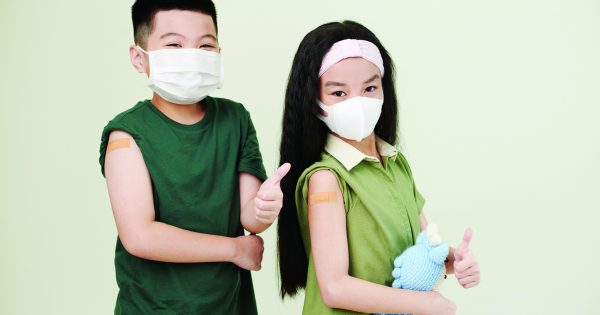“Your daughter has your beautiful eyes!” or “Your son has his dad’s charming smile!” These compliments usually make parents feel proud. However, besides physical attributes, parents can also pass on certain health conditions to their children. These traits or health conditions are passed down to your child through genes. Although some are indeed hereditary, other diseases may result from a combination of gene(s) and the environment (multifactorial). The latter may remain dormant until triggered by specific events or environmental factors, thereby affecting the child’s health and wellbeing.
While you cannot change the genes of your child, you can protect him if you are aware of the risk that he is facing. Learn about the possible signs and symptoms so that you can detect them early, and take actions to prevent or lessen the symptom severity.
Common Multifactorial Conditions
Allergies
Your child is more vulnerable to developing allergic conditions even if only one of you has an allergy. However, your child may not be sensitive to the same things as you are.
Watch out for: Runny, stuffy or itchy nose, sneezing, itchy ears and throat, itchy eyes, rashes, and hives.
Do: Keep an eye on the foods your child eats and the things he comes into contact with. If any of the allergic symptoms appear, bring your child to the doctor. Also try to identify the triggers (eg foods, animal fur, mould, dust mites) and practise measures to avoid it.
Eczema (dermatitis)
A family history of eczema or other allergic conditions predisposes your child to this condition.
Watch out for: Dry and itchy skin, red and rough patches on cheeks, insides of the elbows, knees and ankles, forearms, scalp and neck.
Do: Avoid possible triggers, such as cold and dry environments, soaps, highly allergenic foods (eg eggs) and stress. Have your child examined by the doctor for appropriate diagnosis and treatment. Take precautions to prevent flare-ups.
Vision problems
These include nearsightedness, colour blindness, and lazy eye.
Watch out for: Headaches, squints or tearing when reading or watching TV, crossed or deviated eyes, habitually turns the head to look at objects, trouble distinguishing between red and green colours and colours that contain these hues.
Do: Have your child’s vision checked by an ophthalmologist if he has any of these symptoms. Start to schedule his annual eye examinations by the age of one year to detect potential vision problems early.
Migraines
Migraines usually start to show up around the age of 8 years old, but may be sooner in some children.
Watch out for: Throbbing pain in the forehead, temples or around the eyes, nausea or vomiting, and sensitivity to light and sound.
Do: Identify the triggers, such as fatigue and certain foods (eg cheese, chocolate, caffeine), and help him to avoid them. Headaches in children can be relieved by sleeping or taking pain relief medications. However, it is still important to see a doctor to ensure no serious underlying illness is present.
Irritable bowel syndrome (IBS)
If you have IBS, your child will be more likely to develop IBS than their friends whose parents do not have it.
Watch out for: Frequent abdominal cramps, bloating, alternating bouts of constipation and diarrhoea, colic (in infants).
Do: IBS can usually be managed with simple lifestyle modifications, such as avoiding food triggers (eg caffeine, chocolate) and reducing stress. To exclude any serious underlying digestive disorder, have your child examined by a paediatric gastroenterologist.
Facts & Figures
- In Malaysia, 1 out of 3 people is allergic to something.
- In Westernised countries, childhood eczema has a prevalence of 10%-16%.
- Red-green colour blindness occurs in up to 10% of the world population, and predominantly in male subjects.
- Migraine occurs in 5%-10% of school-aged children in the United States.
- In the United States, IBS symptoms are reported in 6% of middle-school (11-14 years old) and 14% of high school (14-18 years old) students.







Comments